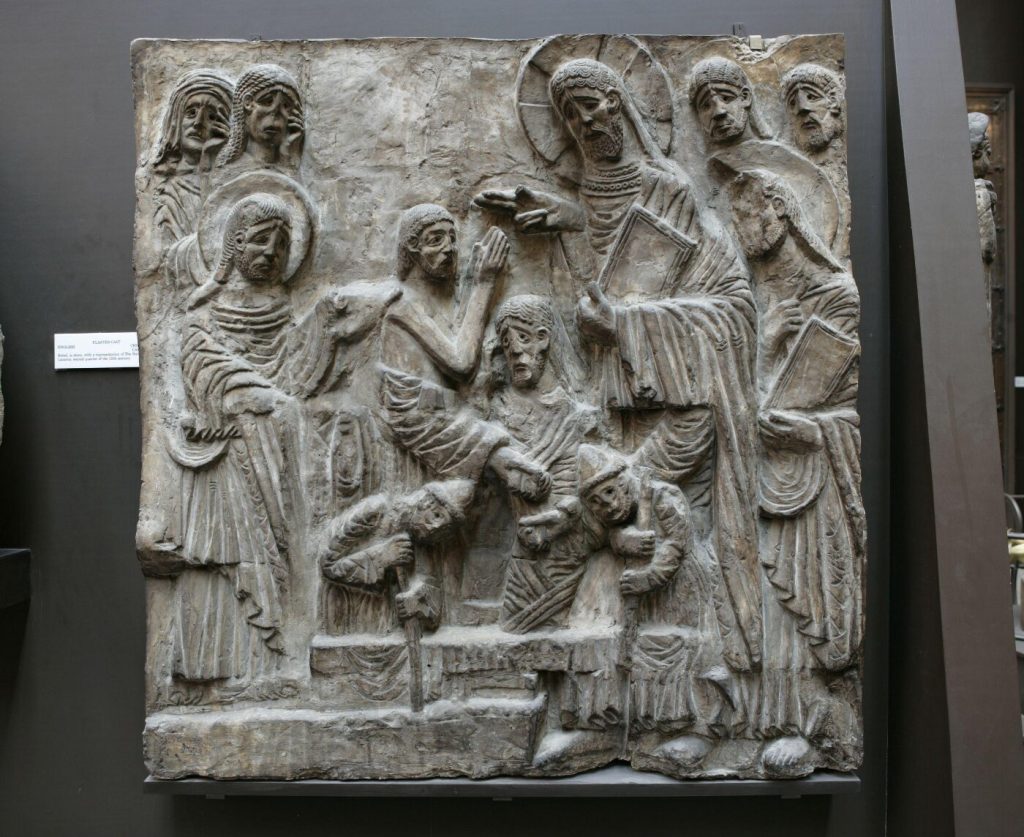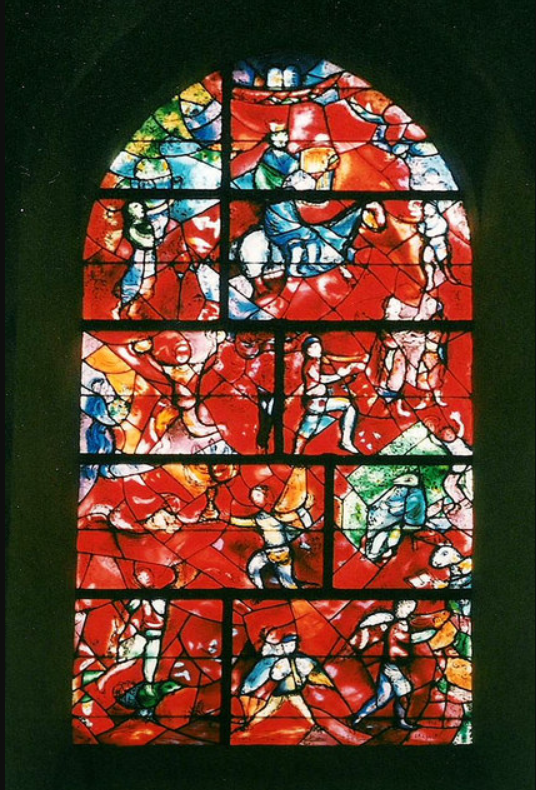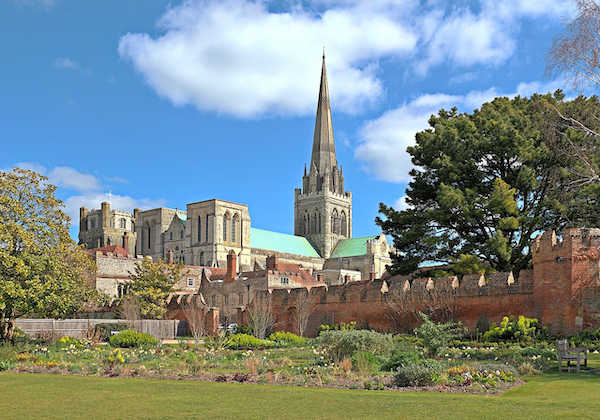For their third Slow Art Day, Chichester Cathedral in West Sussex, England, invited visitors to look slowly at five artworks ranging from the twelfth-century to present day:
- Twelfth-century Romanesque stone reliefs depicting the Raising of Lazarus.
- Graham Sutherland’s “Noli Me Tangere” (1961), which shows the encounter between Mary Magdalene and the Risen Christ who she mistakes for a gardener.
- Marc Chagall’s stained-glass window (1977), illustrating Psalm 150.
- Michael Clark’s “Five Wounds” (1994), consisting of five tiny depictions of the wounds of Christ in locations around the Cathedral, and symbolising the Body of Christ: two at the West end (the feet),
two in the transepts (the hands), and one at the North side (the wound in Christ’s side). - Anne Grebby’s “Enfleshed Word” (2023), a temporary installation in the St John Chapel. This is a triptych altarpiece. The central panel depicts Jesus being baptized by John. The side panels consist of abstract designs depicting the Holy Spirit.


After a brief introduction, participants looked at each work in chronological order for 10 minutes. After an hour, they met up for a second hour of discussion over tea and coffee with John Workman, Cathedral volunteer, who was able to give additional information about the artworks.
The event was fully booked with a maximum of 10 participants in each of two sessions – one in the morning and one in the afternoon. John Workman noted that the small group size works the best in the Cathedral, and is appreciated by the participants.
Workman also sent us a quote written by Hans Feibusch, an artist who saw the importance of art commissioned for a sacred space and wrote this at the end of the Second World War:
But modern people come into church with the impressions of the outside world and all its
Hans Feibusch
images…still quivering in their mind. Their beliefs are shadowy and elusive; they sit and
cannot focus their attention…But if there are paintings… their minds can fix on these,
quieten gradually and make their ascent into the world of which the paintings are only the
shadow.
Hans Feibusch’s work “Baptism of Christ” (1951) hangs in the cathedral, though was not featured in the Slow Art Day event this year.
Workman himself wrote the following about hosting Slow Art Day:
Events like the Slow Art Day are ideal for a Cathedral like Chichester. It gives participants the
opportunity to spend time before the individual artworks. These artworks are in the location for
which they were created. They are there for a purpose; they have something to say, and I think that
the space itself has a part the play.

Chichester Cathedral is one of the three churches that participated in Slow Art Day this year, along with Sint-Pauluskerk in Antwerp, Belgium who has been taking the lead in the Slow Art Day church movement. We hope they can continue to inspire more churches to participate, and look forward to what they come up with in 2024.
– Johanna, Phyl, Ashley, and Jessica Jane



